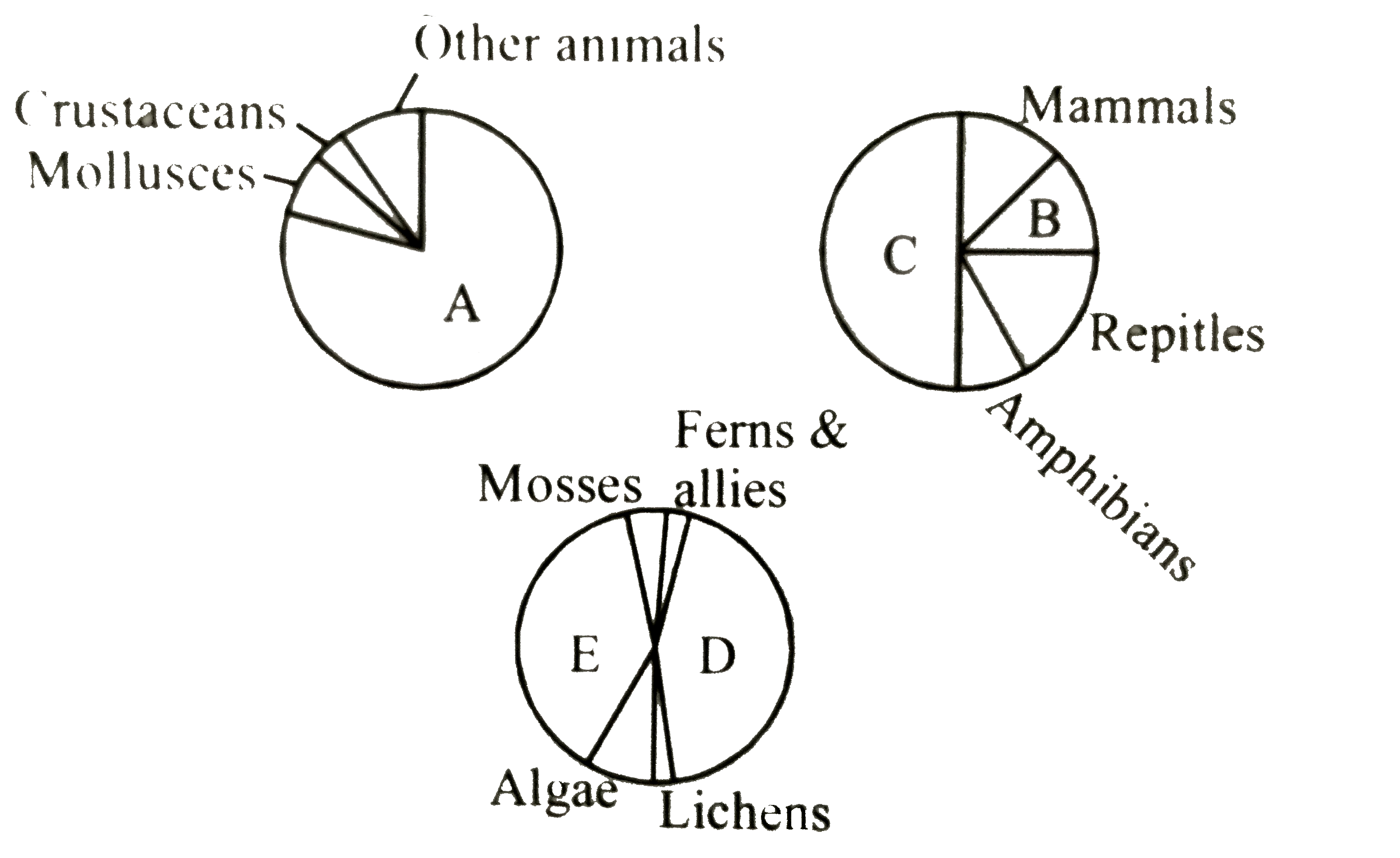Select the correct option that represents examples of the following types of animals.
(i) Roundworm
(ii) Fish possessing poison string
(iii) A limbless amphibian
(iv) An oviparous mammal
(i)(ii)(iii)(iv)PalaemonLabeo rohitaSalamanderKangaroo
(i)(ii)(iii)(iv)NereisTorpedoHylaPteropus
(i)(ii)(iii)(iv)HirudinariaPristisBufoDelphinus
(i)(ii)(iii)(iv)AscarislumbricoidesSting rayIchthyophisDuck-billed platypus
The correct Answer is:D
To answer the question regarding examples of specific types of animals, we will go through each type one by one and identify the correct examples.
1. Identify a Roundworm:
- Roundworms are a type of parasitic worm. The most common example of a roundworm is Ascaris lumbricoides, which causes the infection known as Ascariasis.
- Therefore, for the roundworm, the correct example is Ascaris.
2. Identify a Fish Possessing a Poison Sting:
- A fish that possesses a poison sting is commonly known as a stingray. The scientific name for this type of fish is Torpedo.
- Thus, the correct example for a fish possessing a poison sting is Stingray.
3. Identify a Limbless Amphibian:
- Limbless amphibians belong to a group known as caecilians. An example of a limbless amphibian is Ichthyophis.
- Hence, the correct example for a limbless amphibian is Ichthyophis.
4. Identify an Oviparous Mammal:
- Oviparous mammals are those that lay eggs instead of giving birth to live young. The most well-known example of an oviparous mammal is the platypus.
- Therefore, the correct example for an oviparous mammal is Duck-billed Platypus.
Final Answer:
- (i) Roundworm: Ascaris
- (ii) Fish possessing poison sting: Stingray
- (iii) A limbless amphibian: Ichthyophis
- (iv) An oviparous mammal: Duck-billed Platypus
- Roundworms are a type of parasitic worm. The most common example of a roundworm is Ascaris lumbricoides, which causes the infection known as Ascariasis.
- Therefore, for the roundworm, the correct example is Ascaris.
- A fish that possesses a poison sting is commonly known as a stingray. The scientific name for this type of fish is Torpedo.
- Thus, the correct example for a fish possessing a poison sting is Stingray.
- Limbless amphibians belong to a group known as caecilians. An example of a limbless amphibian is Ichthyophis.
- Hence, the correct example for a limbless amphibian is Ichthyophis.
- Oviparous mammals are those that lay eggs instead of giving birth to live young. The most well-known example of an oviparous mammal is the platypus.
- Therefore, the correct example for an oviparous mammal is Duck-billed Platypus.
- (i) Roundworm: Ascaris
- (ii) Fish possessing poison sting: Stingray
- (iii) A limbless amphibian: Ichthyophis
- (iv) An oviparous mammal: Duck-billed Platypus
Topper's Solved these Questions
- ANIMAL KINGDOMBOOK - NCERT FINGERTPS ENGLISHCHAPTER - ANIMAL KINGDOMEXERCISE - Hots
5 Videos
- ANIMAL KINGDOMBOOK - NCERT FINGERTPS ENGLISHCHAPTER - ANIMAL KINGDOMEXERCISE - NCERT examples problems
13 Videos
- ANIMAL KINGDOMBOOK - NCERT FINGERTPS ENGLISHCHAPTER - ANIMAL KINGDOMEXERCISE - Classification of non-chordates
41 Videos
- ANATOMY OF FLOWERING PLANTSBOOK - NCERT FINGERTPS ENGLISHCHAPTER - ANATOMY OF FLOWERING PLANTSEXERCISE - Anatomy Of Flowering Plants
143 Videos
- BIOLOGICAL CLASSIFICATIONBOOK - NCERT FINGERTPS ENGLISHCHAPTER - BIOLOGICAL CLASSIFICATIONEXERCISE - Biological Classification
132 Videos
Similar Questions
Knowledge Check
Select the correct option that represents examples of the following types of animals.
(i) Cold blooded animal
(ii) Warm blooded animal
(iii) Animal possessing dry and cornified skin
(iv) Hermaphrodite animal.A(i) (ii) (iii) (iv)Forg Pigeon Wall lizard EarthwormB(i) (ii) (iii) (iv)Pigeon Frog Crocodile HydraC(i) (ii) (iii) (iv)Rabbit Fish Frog EarthwormD(i) (ii) (iii) (iv)Fish Frog wall lizard StarfishSelect the correct option representing the excretory organs present in (i) earthworm, (ii) centipede, (iii) prawn, and (iv) flatworm.
A(i)(ii)(iii)(iv)Malpighian tubulesFlame cellNephridiaGreen glandsB(i)(ii)(iii)(iv)Flame cellGreen glandMalpighian tubulesNephridiaC(i)(ii)(iii)(iv)NephridiaMalpighian tubulesGreen glandFlame cellD(i)(ii)(iii)(iv)Green glandNephridiaFlame cellMalpighianRead the given statements characterizing certain types of animals. Select the option which correctly exemplifies each of these types.
(i) Animal having external gills
(ii) Animal having internal gills
(iii) Animal showing tracheal respiration
(iv) Animal revealing buccopharyngeal respirationA(i)(ii)(iii)(iv)PrawnArenicolaUnioFishB(i)(ii)(iii)(iv)NecturusUnioPrawnFrogC(i)(ii)(iii)(iv)PilaArenicolaUnioToadD(i)(ii)(iii)(iv)NecturusPilaMilipedeToad
Give the functions of the following types of teeth.
(i) Incisor (ii) Canine (iii) Molar (iv) Pre-molar
View SolutionGive an example for each of the following
A viviparous animal
(b) A fish possessing a poison sting
(c ) A fish possessing an electric organ
(d) An organ, which regulates buoyancy
(e) Animal, which exhibits alternation of generation
(f) Oviparous animal with mammary of gland
View SolutionGive the nature of bonding in the following types of solids.
(i)Copper (ii) water (iii) sodium chloride (iv) graphite.
View Solution
Study the above pie charts and match the following
(i) Angiosperms (ii) Fishes
(iii) Birds (iv) Fungus
(v) Insects
View SolutionWhat are the following substances ? Give one example of each type .
(i) Antacid
(ii) Nonionic detergents
(iii) Antiseptics
View Solution
